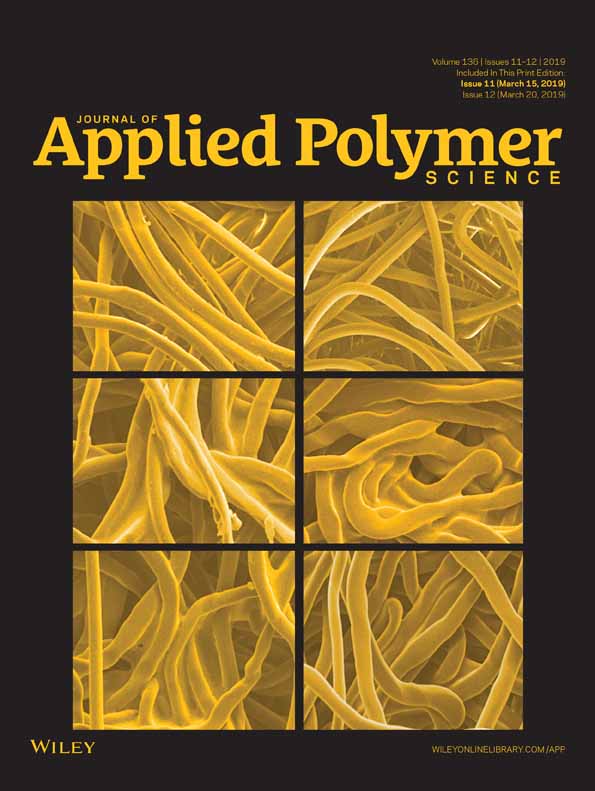In situ synthesized and dispersed melamine polyphosphate flame retardant epoxy resin composites
ABSTRACT
The dispersion of flame retardants in polymer matrix has significant impact on the final properties of the final materials. Homogenous dispersion for additive type flame retardant powder in polymer melt or solution with high viscosity is a challenge all the time. In the present research, melamine polyphosphate (MPP) is employed to flame-retard the epoxy resin (EP). Different from direct addition of MPP powder in viscous EP glue like conventional means, MPP is firstly synthesized by melamine and polyphosphoric acid in a good solvent for EP. Keeping fine and even dispersion of the produced MPP particles, EP prepolymer is added into the MPP containing solution. By this way, perfect dispersion of the flame retardant can be achieved both in the glue and the cured resin. A series of tests such as the particle size analysis, flammability evaluation, and mechanical properties tests are conducted to compare the MPP flame retardant EP obtained by this method and the conventional one. It shows that the in situ synthesis and compounding method can endow the MPP incorporated EP glue system with better homogeneity and stability, hence leading to higher flame retardancy and obviously improved mechanical performance of the final composite. © 2018 Wiley Periodicals, Inc. J. Appl. Polym. Sci. 2019, 136, 47194.




